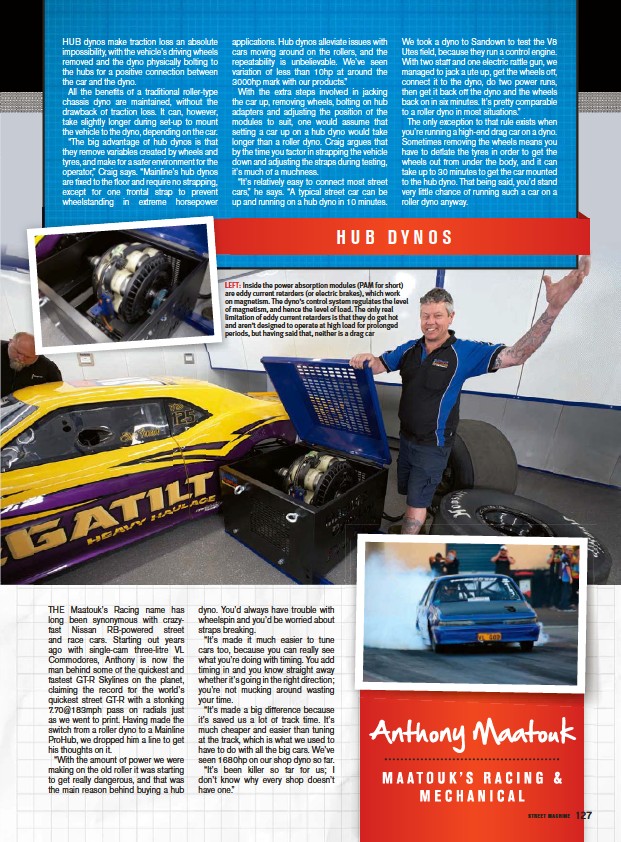HUB DYNOS

HUB dynos make traction loss an absolute impossibility, with the vehicle’s driving wheels removed and the dyno physically bolting to the hubs for a positive connection between the car and the dyno.
All the benefits of a traditional roller-type chassis dyno are maintained, without the drawback of traction loss. It can, however, take slightly longer during set-up to mount the vehicle to the dyno, depending on the car.
“The big advantage of hub dynos is that they remove variables created by wheels and tyres, and make for a safer environment for the operator,” Craig says. “Mainline’s hub dynos are fixed to the floor and require no strapping, except for one frontal strap to prevent wheelstanding in extreme horsepower applications. Hub dynos alleviate issues with cars moving around on the rollers, and the repeatability is unbelievable. We’ve seen variation of less than 10hp at around the 3000hp mark with our products.”
With the extra steps involved in jacking the car up, removing wheels, bolting on hub adapters and adjusting the position of the modules to suit, one would assume that setting a car up on a hub dyno would take longer than a roller dyno. Craig argues that by the time you factor in strapping the vehicle down and adjusting the straps during testing, it’s much of a muchness.
“It’s relatively easy to connect most street cars,” he says. “A typical street car can be up and running on a hub dyno in 10 minutes. We took a dyno to Sandown to test the V8 Utes field, because they run a control engine. With two staff and one electric rattle gun, we managed to jack a ute up, get the wheels off, connect it to the dyno, do two power runs, then get it back off the dyno and the wheels back on in six minutes. It’s pretty comparable to a roller dyno in most situations.”
The only exception to that rule exists when you’re running a high-end drag car on a dyno. Sometimes removing the wheels means you have to deflate the tyres in order to get the wheels out from under the body, and it can take up to 30 minutes to get the car mounted to the hub dyno. That being said, you’d stand very little chance of running such a car on a roller dyno anyway.
